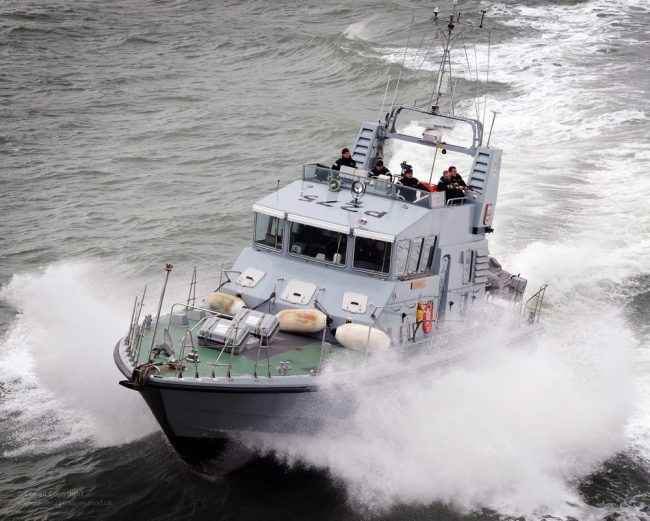This blog post was written by Timothy Edmunds, Professor of International Security, University of Bristol and Dr Scott Edwards, Research Associate, Translational Organised Crime at Sea, University of Bristol.
The Home Office has announced a plan to bring in the Royal Navy to take charge of policing the English Channel after the number of migrants attempting the crossing in small boats tripled in 2021. Full details of the plan have not been revealed, but appear to involve the navy taking a leadership and planning role, as well as possibly providing additional vessels to augment the Border Force cutters already at sea.
Certainly, at first glance, the navy has the potential to bring more resources to the problem. Border Force currently operates five cutters and six coastal patrol vessels, whereas the navy has many more ships suited to maritime security tasks. These include 16 Archer class patrol vessels and eight of the larger and more capable River class offshore patrol vessels.
Yet numbers can be deceiving. The Archers and Rivers are already in high demand. Two of the Rivers, HMS Tamar and HMS Spey, are forward deployed to the Indo-Pacific. Others are assigned to areas of longstanding UK interest, such as the Caribbean and the Falklands, or now patrol the UK’s fishing waters following Brexit. Likewise, two of the Archers are deployed to the Gibraltar Squadron, another two assigned to security duties at the Faslane nuclear submarine base in Scotland, while the others play important roles with University Royal Naval Units.
With so many vessels already in use elsewhere, it seems unlikely that the Admiralty will welcome new deployments to the Channel -– especially so soon after an announcement that Border Force is receiving money for an upgraded fleet of cutters.

P2000 Archer Class Patrol Vessel HMS Raider, LA(Phot) Martin Carney, Flickr

